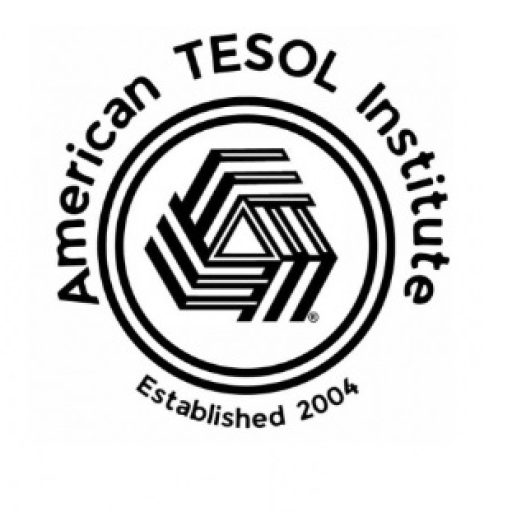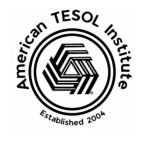In every classroom, mistakes are inevitable—and that’s a great thing! When students make mistakes, they’re actively engaging with the material, challenging their understanding, and creating pathways for learning. For TESOL teachers, helping students harness the power of mistakes is essential for deep, lasting language acquisition. This concept is called error-based learning and can transform every slip-up into an opportunity for growth.
In fact, research shows that mistakes can actually enhance memory and learning. Each mistake presents a chance to reflect, analyze, and correct, which helps the brain process information on a deeper level. Let’s explore some creative ways TESOL teachers can use mistakes to help students memorize correct answers and build confidence in their language skills.
1. Celebrate Mistakes as Learning Moments
Mistakes are learning milestones, not setbacks. Creating a classroom culture where mistakes are welcomed as a normal part of learning is essential for language learners, who often feel self-conscious about errors. When students feel safe to make mistakes, they’re more likely to participate and take risks with their language use.
Strategy: Start a “Genius Moments” session in class where students share one mistake they made and what they learned from it. Reward students for actively correcting their mistakes, making it clear that every error is a step closer to fluency.
Example: If a student says, “He go to school yesterday,” guide them to the correct form—“He went to school yesterday”—and praise them for trying. Then, ask the class why we use “went” here, reinforcing the grammar point without making it a negative experience.
2. Encourage Self-Correction with “Think-Back” Moments
Encourage students to notice and correct their own mistakes with “think-back” moments. By asking students to pause and consider their answers, they engage in a mini self-assessment that reinforces the correct structure or vocabulary.
Strategy: After a student makes a mistake, ask them to take a “think-back moment” where they quickly consider if something sounded off. Giving them a few seconds to review without rushing to correct builds their confidence in self-editing.
Example: If a student says, “She don’t like coffee,” ask, “Does that sound right to you?” Often, students will self-correct to “She doesn’t like coffee,” which reinforces the correct auxiliary verb usage and teaches them to trust their instincts.
3. Use Mistakes to Teach Patterns and Rules
Mistakes often reveal recurring patterns, especially in grammar and pronunciation. TESOL teachers can use these moments to teach or reinforce rules, making abstract concepts feel practical and relevant.
Strategy: Keep a “Mistake Tracker” on the board for common errors. For example, if many students are mixing up “do” and “does,” add it to the tracker. When a mistake on the list happens, use it as a teaching moment to discuss the rule with the whole class.
Example: Let’s say several students struggle with subject-verb agreement. Write “He go” and “He goes” on the board and ask the class to pick the correct form. This makes error correction a collaborative activity and helps solidify patterns in a memorable way.
4. Turn Mistakes into Memory Hooks
Sometimes, mistakes make a stronger impression on students than correct answers, making them memorable in a humorous or meaningful way. This can be especially effective in vocabulary learning or pronunciation practice.
Strategy: Use memorable mnemonics or silly phrases related to common mistakes. For example, if students confuse “desert” (the dry region) and “dessert” (the sweet treat), explain, “Dessert has two ‘s’s because you always want seconds!”
Example: If students pronounce “beach” as “b*tch” (a common slip), use humor to explain the difference in sounds. This lighthearted approach creates a “mental hook” that helps students remember the correct pronunciation without feeling embarrassed.
5. Encourage Peer Correction
Peer correction allows students to learn from each other, which can be less intimidating than direct teacher correction. When students help each other correct mistakes, they gain confidence and reinforce their own understanding of the language.
Strategy: Pair up students for a “Catch and Correct” activity. Each partner reads a sentence or answers a question, and the other listens for any mistakes. If they catch an error, they correct it together.
Example: Have students work in pairs to read sentences aloud, with each partner listening carefully. If one partner says, “She live in Canada,” the other can help correct it to “She lives in Canada.” This reinforces subject-verb agreement and builds teamwork skills.
6. Repeat and Reflect: The Power of Repetition
Studies show that repetition helps solidify knowledge in long-term memory. Encourage students to repeat the correct form of a sentence or phrase after making an error, which helps engrain the proper structure or vocabulary.
Strategy: After correcting a mistake, ask students to repeat the sentence three times. This reinforces the correct usage and helps with memorization, especially for tricky grammatical structures.
Example: If a student says, “I didn’t went to the party,” gently correct them to “I didn’t go to the party.” Then, have them repeat the correct sentence a few times to help lock in the correct verb form.
7. Use “Error-Based Quizzes” for Reinforcement
Create quizzes based on common mistakes made during lessons. This approach turns real errors into learning opportunities, making students more mindful of common pitfalls.
Strategy: At the end of the week, design a short quiz with sentences based on frequent mistakes. Have students choose the correct answers and discuss why they’re right, reinforcing language concepts in a playful, non-threatening way.
Example: Include questions like, “Choose the correct form: ‘She don’t / doesn’t like coffee.’” When students actively select the right answers, they reinforce what they’ve learned in a fun, interactive format.
8. Emphasize the Growth Mindset
Remind students that language learning is a journey where mistakes are part of the process. Emphasizing a growth mindset helps students feel comfortable with errors, knowing that every mistake brings them closer to fluency.
Strategy: Encourage a mindset where mistakes are “gems” in the learning process. After a student makes an error and corrects it, say, “That’s another gem added to your English treasure box!” This playful approach turns mistakes into badges of progress.
Example: At the end of each week, celebrate “Mistake of the Week,” where students share one funny or interesting mistake they made and what they learned from it. This celebration promotes a growth mindset and builds a supportive learning community.
9. Teach Error Spotting as a Skill
Spotting errors can be a valuable skill for students, helping them to recognize and self-correct in real time. By practicing error-spotting, students can become more aware of their own language use.
Strategy: Show students sentences with common mistakes and ask them to identify and correct the errors. This helps them internalize grammar rules and vocabulary through hands-on correction.
Example: Create a list of sentences with intentional mistakes, such as “She want to eat pizza.” Have students correct each sentence, either individually or in pairs, to practice recognizing correct forms.
Why Using Mistakes Enhances Memory and Learning
Mistakes engage the brain in a way that correct answers often don’t. When students make a mistake, their brains process the error, analyze what went wrong, and store the corrected information more deeply. In short, mistakes activate deeper cognitive processing, which strengthens memory and recall. By embracing mistakes as valuable learning tools, TESOL teachers create a classroom where students not only learn faster but also retain language skills more effectively.
Conclusion: A New Look at “Mistakes”
“J is for Genius” is more than a catchy phrase; it’s a reminder that every error is a chance to build genius-level language skills. By embracing mistakes as tools for growth, TESOL teachers foster a supportive, engaging environment where students learn to correct, memorize, and celebrate their progress. Encouraging students to lean into their mistakes not only enhances language proficiency but also builds confidence and a lifelong love for learning.
So, the next time a student stumbles over a word or structure, remember: it’s not just a mistake; it’s a teaching moment, a memory booster, and a chance to add a little more genius to their English skills!



